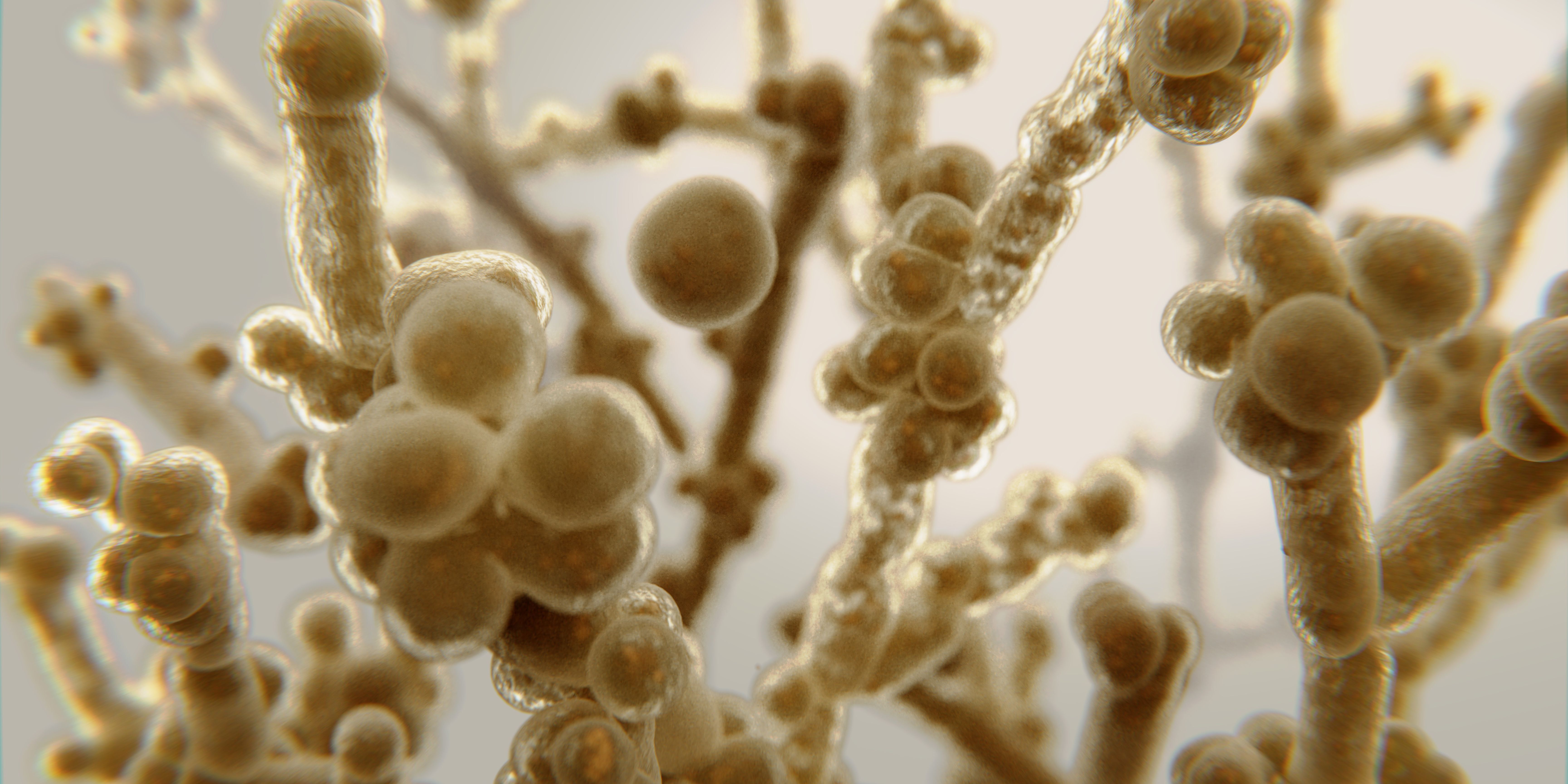Written by Nancy - 6 Minutes reading time
Yeast made to harvest light hint at evolution’s past

On Earth, wherever there is light, there are plants, green algae, or cyanobacteria. The secret to their evolutionary success is light-harvesting proteins that harness energy from the sun. But long before photosynthetic proteins dominated the planet, another group of light-harvesting proteins made their debut. Thought to have evolved as long ago as cellular life itself, rhodopsins were among the first protein solar panels.
Both prokaryotes and eukaryotes express rhodopsins, and scientists believe that prokaryotes donated rhodopsin genes to eukaryotes through horizontal gene transfer. Now, reporting in Current Biology, a team of evolutionary and synthetic biologists reenacted this process by transferring a rhodopsin gene from one eukaryotic species to another to see whether it still functioned in its unfamiliar host, offering a glimpse into how rhodopsins found their way into eukaryotic evolutionary history.
The movement of genetic material from prokaryotes seemed like a plausible route for rhodopsins to make their way into eukaryotes, but researchers still wrestled with some of the details of this genetic hand off. Specifically, they wondered whether prokaryotes transferred rhodopsin genes alongside a suite of genes that help rhodopsins function inside their new host. After all, bacteria typically transfer clusters of genes that work together in operons, rather than individual genes. Scientists wondered whether rhodopsins similarly need to pair up with other genes to function correctly or if they are more self-reliant.
To begin their investigation, the team had to carefully choose a rhodopsin. Study author and synthetic biologist Anthony Burnetti at the Georgia Institute of Technology turned to a variety of eukaryotic rhodopsins that traffic to vacuoles in the cytoplasm because scientists didn’t know whether they relied on a suite of proteins to travel to those sites. “I wanted something that went cleanly to the vacuole rather than going to other places in the cell,” Burnetti explained.
Vacuoles run one of the most expensive operations in the cell, but light-harvesting rhodopsins help reduce their energy demands. These organelles lower the acidity of the cytoplasm by sequestering its protons. Vacuoles continuously burn adenosine triphosphate (ATP) to drive this process, but once ATP runs low, the vacuoles stall and leech protons back into the cytoplasm. “It’s kind of like a leaky ship where you have to run a little generator to keep pumping the water out of it,” said study author and evolutionary biologist Will Ratcliff at the Georgia Institute of Technology. “If you run out of gas, then the ship starts taking a lot of water in.”
From the great variety of vacuole-homing rhodopsins, Ratcliff chose one found in the edible corn smut fungus Ustilago maydis, a delicacy in Mexican cuisine. The vacuole-homing rhodopsin from the corn-smut fungus uses light energy instead of ATP to pump protons into the vacuole, helping the cell to cut back on its ATP spending in the same way that rooftop solar panels minimise energy bills.
Having chosen their rhodopsin, the team had to pick a recipient species to play host to the gene. They turned to a different fungus of culinary importance: baker’s yeast (Saccharomyces cerevisiae). Often used in baking, brewing, and winemaking, it moonlights as a model species for fungus research. Because this yeast lives in dark places and doesn’t express any rhodopsins, its genome did not evolve to support the light-harvesting proteins. This made baker’s yeast a suitable recipient for the team to test whether they could plug and play the corn smut fungus’ rhodopsin, turning the dark dwelling yeast into light harvesters.
The team started their study by fusing the rhodopsin to green fluorescent protein, so that they could track its movement inside the yeast, where they observed that it localised to the vacuoles without requiring additional genes that the baker’s yeast didn’t already possess.
Although the researchers discovered the rhodopsin inside the vacuole, they didn’t know whether it was functional. Without a suite of helper genes, rhodopsins might not benefit the cell, or worse, disrupt its normal workings. Nonetheless, further investigation revealed that the cytoplasm became even less acidic when they introduced the rhodopsin, suggesting that it functioned as a proton pump that might reduce the cell’s dependency on ATP-fueled pumps.
This independent rhodopsin provided a clear benefit to the yeast without relying on a team of other helper genes, but the researchers wanted to determine whether it also gave the yeast an evolutionary edge. They compared the competitiveness of the genetically modified and original strains by pooling them together in equal numbers and allowing them to grow. They found that the rhodopsin-bearing yeast burgeoned overtime, but only when cultured in the light.
“This was a very creative way to really show that these rhodopsins could provide a competitive advantage,” said Adrian Marchetti, a biological oceanographer at the University of North Carolina at Chapel Hill who was not involved with the study.
Overall, the gene transferred on its own provided a benefit to the yeast, but the scientists wondered if this success came at a cost. To find out, Burnetti and his team stained the yeast with propidium iodide to flag dead cells. They found that rhodopsin-bearing yeast had more casualties than cultures without rhodopsin when grown in the dark, revealing that the gene was toxic to its new hosts. The rhodopsin-bearing yeast died in even greater numbers when grown in the light, suggesting that the rhodopsin was more toxic when active. Since the gene lowered survival, the team deduced that the only way it could have provided an overall competitive advantage was by boosting reproduction.
There are several potential reasons why the rhodopsin might have led yeast to an early grave. Study author and evolutionary biologist Autumn Peterson at the Georgia Institute of Technology said, “By adding a protein, there are going to be some costs.” After all, synthesising multiple copies of an extra protein using finite resource might burden the cells.
Burnetti added that the rhodopsin may also carry out harmful functions. “They move lipids back and forth between both sides of the membrane,” he said. “So, they could be slightly messing with the physiology.”
Another possibility is that the rhodopsins use light to convert oxygen into reactive oxygen species that damage cells by disrupting proteins and DNA. “We all know that we need oxygen, but within a cell, it can be like dynamite,” Marchetti remarked.
Burnetti and his team demonstrated that single-gene transfers could have happened during horizontal gene transfer in evolutionary history, a finding that could propel researchers to study these genetic hand offs in other eukaryotes. For example, Marchetti studies how vacuolar rhodopsins benefit phytoplankton, particularly where there’s good light but a lack of nutrients, like iron. He similarly wonders how phytoplankton inherited rhodopsins, but phytoplankton are trickier to work with in the lab. Given these limitations, he said that he found this study valuable. “We decided it must have perhaps come from a bacterium through horizontal gene transfer. This paper shows that’s a viable strategy,” said Marchetti.
In the future, Peterson aims to test the evolutionary benefit of this rhodopsin in other circumstances. “We are interested in putting the rhodopsin into snowflake yeast and then eventually doing a long-term evolutionary experiment,” she said. Snowflake yeast are multicellular balls of baker’s yeast, and the team could use them to study whether rhodopsins confer a benefit to the interior cells sheltered from light within multi-cellular organisms.
Interested in the dynamic Food Science Industry? Let our experts guide your career. Explore how we can help you today! Discover the possibilities here.
Also published on Thescientist.com
Want to stay informed about current Life Science and recruitment news on a regular base? Then register here for free.
